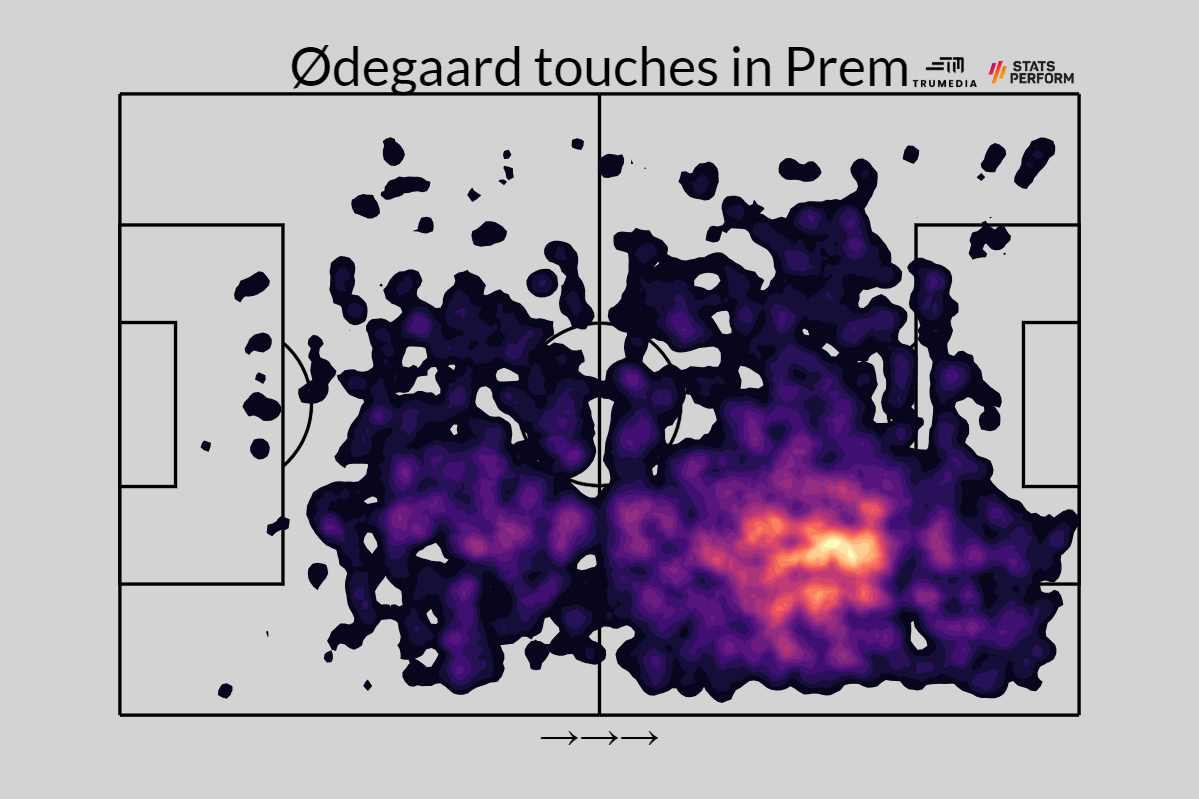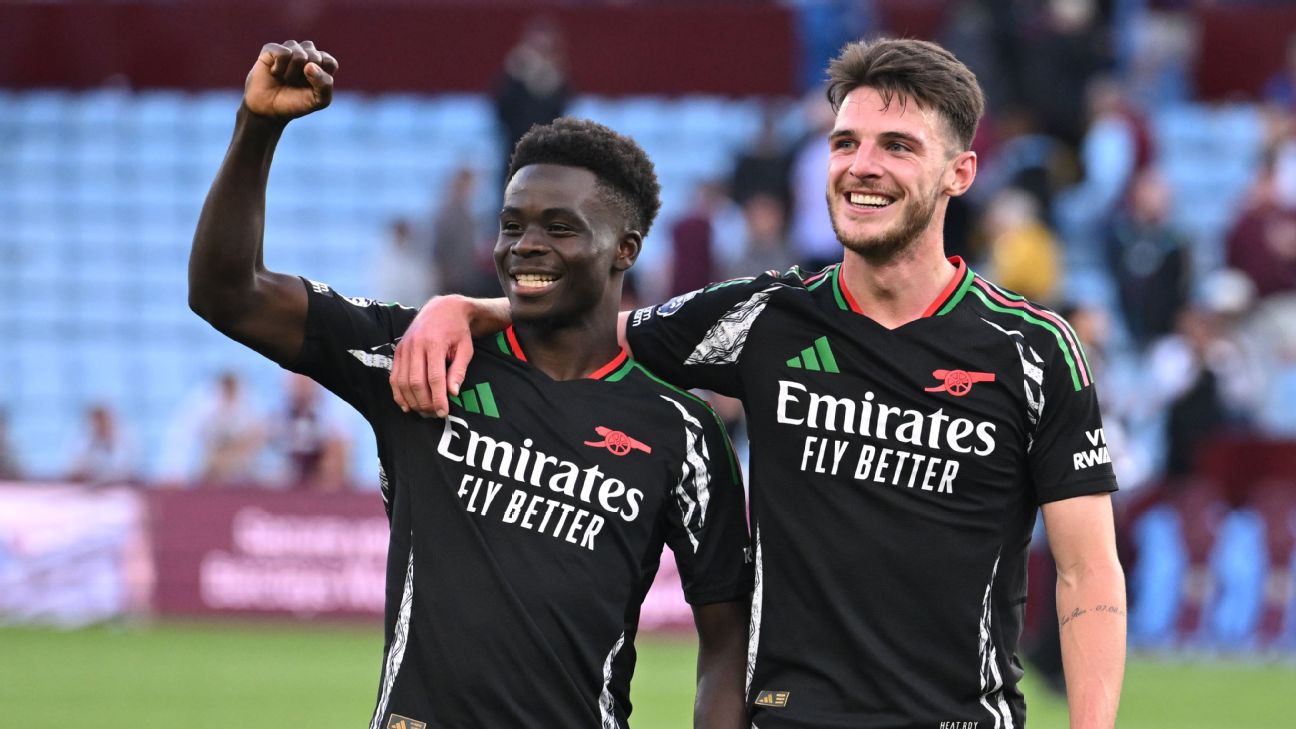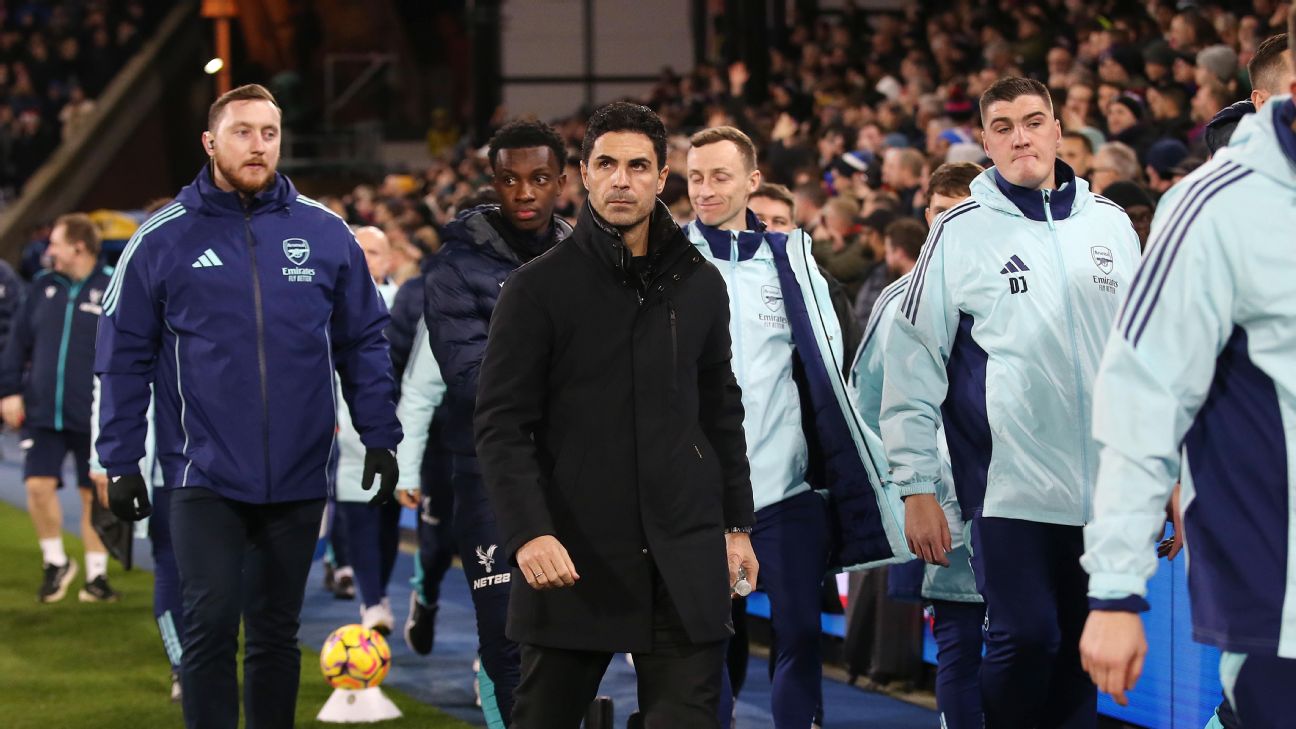The debate over who will be crowned this Premier League season’s PFA Player of the Year has been fascinating.
Unlike in recent years, where either one obvious candidate emerges (Erling Haaland) or two titans go head-to-head (Kevin De Bruyne vs. Mohamed Salah), the 2023-24 campaign has produced at least six legitimate contenders for the award, which is voted for by the players.
The Football Writers’ equivalent award (FWA) was bestowed upon Manchester City forward Phil Foden earlier this month, with Arsenal’s Declan Rice finishing second and City’s Rodri completing the top three. But one player surprisingly not in contention was Arsenal captain Martin Ødegaard.
With Foden, Rice and Rodri ranked ahead of him in the FWA vote, the Norway international is eighth in the betting odds for the PFA POTY award behind Foden, Rodri, Rice, Chelsea’s Cole Palmer, Haaland, Aston Villa’s Ollie Watkins and Saka. That’s not just odd; it’s downright shocking.
When you consider everything Ødegaard does on the pitch, for a team that have spent a third of the season top of the table and may yet win the league, it’s incredible that he’s not a front-runner given how integral he is to every aspect of Arsenal’s play.
Here is why he should win it.
– Stream on ESPN+: LaLiga, Bundesliga, more (U.S.)
He gets involved early
Mikel Arteta’s side look to control games, and a key tenet of that is keeping the ball. Arsenal average 58.1% possession in Premier League matches and that starts at the back, with short goal kicks and buildup play which the midfielders have to drop deep and help orchestrate.
Jorginho is looked to as the signal controller in deeper areas, but he’s started only 10 Premier League games this term. Rice began the campaign as the deepest midfielder but struggled to conduct play from the base of midfield and found greater success pushing forward, which saw Ødegaard take on a larger role in the first phase.
Despite essentially operating as No. 8/No. 10, he’s continued to carry that strain all season long. He can and will drop in to take early passes off the centre-backs, turn out of pressure and go forward; or simply play his role in a circuit that bypasses an opponent’s press.
The fact that he’s received 1,791 passes (excluding crosses) in the league this season — the third-most at the club behind William Saliba and Rice, but more than Gabriel Magalhães and Ben White — is indicative of how involved he is early on.
He makes everything tick

Once Arsenal are out of the first phase, Ødegaard really comes to life. You can see the cogs in his mind starting to turn as he figures out how to crack open an opponents’ defence and he regularly heads over to the sideline during breaks in play to theorise with Arteta on in-game strategy.
He is almost always Saliba’s first choice of pass out of defence, slanting the ball out towards the right side. Ødegaard can then activate the White-Saka combination and watch them slalom up the flank, or receive the ball back inside and flip play to the other side of the pitch.
He has played the most progressive passes (361) of any Arsenal player — with Rice (336) trailing in second — and he’s second in the league overall, with only Rodri (496) ahead of him. He’s also attempted by far the most through-balls (39) not only in the squad, but across the Premier League.
There’s a huge right-sided bias to Arsenal when on the ball and while Saka plays a part in that, the main factor is that the game funnels through Ødegaard. He can also carry the ball from the middle third to the final third himself; he’s done that 79 times this season, more than any other Arsenal player. Having that ability to skip away from a marker, or go shoulder-to-shoulder and keep the ball, adds an extra layer to his game.
He is a creative master

Things step up another notch when Ødegaard gets on the ball in the final third. He does things that make Emirates Stadium gasp in surprise, or descend into a bewildered, collective hush. He sees passes no one else does and creates chances that shouldn’t exist.
“The crowd appreciate him because they know he will lead and deliver,” TNT’s Premier League commentator Lucy Ward says. “He has a special ability to find a relationship with every player on the pitch — especially on the right — and make it work. He is a sumptuous player.”
Watching him operate 20-25 yards from goal is special; he looks like Man City’s legendary David Silva at his peak, either feeding incredible reverse passes into the box using his left foot, or circulating the ball calmly in an attempt to steadily throttle the opposition into submission.
Once again, the statistics back up his brilliance: Ødegaard has completed the most passes into the penalty area (152) of any Premier League player, with Saka and Son Heung-Min miles back in second (103). He’s also top for shot-creating actions (207), pipping Bruno Fernandes (200) in that area.
His tally of eight goals is a healthy contribution to an attack that fires on all cylinders, never asking for too much from any one source. He scored almost double that amount (15) last season in the league, but that doesn’t mean he’s regressed — it’s more that the team needed him to shoulder the goal-scoring load last year, so he did. This year his team need him to be creative, so he is.
Martin Odegaard 🪄 pic.twitter.com/yecDHKSJi9
— Arsenal (@Arsenal) May 13, 2024
He puts in the hard work
Over the years, we’ve accepted that players who hold the key to unlocking opponents and put up huge attacking numbers tend to be a lightweight defensively and don’t pull their weight. But that’s fine as someone else will do the hard yards, leaving them free to conserve their energy for greater things. Not Ødegaard. Not only does he do all of the above, but he leads and dictates Arsenal’s pressing strategy too.
The Gunners always funnel opponents to their left side to build up, pushing the ball towards Ødegaard and Saka, who are brilliant at creating turnovers. The Norwegian is constantly deciding which player to pick up, when not to focus on the next man, and balancing the desire to press with the danger of leaving his midfield teammates exposed.
Ødegaard has totalled 10 tackles in the attacking third, second only to Saka (20) at Arsenal, suggesting that right-sided pressing combo does a decent amount of damage.
Mikel Arteta points to the leadership of Martin Odegaard after Arsenal’s 2-0 win over Luton Town in the Premier League.
He is a leader who sets the standards
The amount of stamina this ludicrously wide scope of responsibility takes is remarkable, but Ødegaard doesn’t often miss games due to injury. He’s on the pitch 95% of the time, contributing everywhere and almost coaching his team through every phase.
He’s completed 90 minutes in 28 of his 34 league games this season, and in two of the six he fell short, he played 89. That is likely why Arteta gave him the captain’s armband and, while that was initially more of a “lead by example” move, Ødegaard’s leadership qualities have grown significantly over the last two years.
He’s constantly geeing up the crowd and getting the Emirates roaring; he took the first penalty in the winning shootout against FC Porto in the Champions League round of 16 to set the tone; and he handed a penalty to Kai Havertz against AFC Bournemouth back in September, getting the Germany forward off the mark for Arsenal and giving his teammate a boost of confidence when he badly needed it.
These are subtle, small, unquantifiable things, but they add up to create the full picture of what Ødegaard is: The most important player to this Arsenal team. He is the most functional, yet the most thrilling; the calmest, yet often the most vocal; and is by far the most intelligent and influential player on the pitch for them.
Given the level of consistency he’s delivered all of this with, he should absolutely be in the running for the PFA Player of the Year award. Others certainly have a case — Foden’s impact at City, Palmer’s 31 goal contributions from 32 games for Chelsea, or Watkins’ 19 goals to help Villa into Europe — but it’s hard to argue that it is a better one than his.



